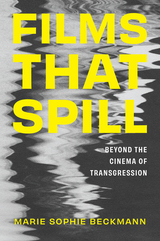4 books about Sade
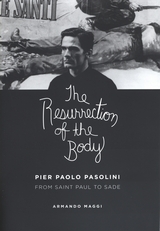
The Resurrection of the Body
Pier Paolo Pasolini from Saint Paul to Sade
Armando Maggi
University of Chicago Press, 2009
Italian novelist, poet, and filmmaker Pier Paolo Pasolini was brutally killed in Rome in 1975, a macabre end to a career that often explored humanity’s capacity for violence and cruelty. Along with the mystery of his murderer’s identity, Pasolini left behind a controversial but acclaimed oeuvre as well as a final quartet of beguiling projects that signaled a radical change in his aesthetics and view of reality.
The Resurrection of the Body is an original and compelling interpretation of these final works: the screenplay Saint Paul, the scenario for Porn-Theo-Colossal, the immense and unfinished novel Petrolio, and his notorious final film, Salò or the 120 Days of Sodom, a disturbing adaptation of the writings of the Marquis de Sade. Together these works, Armando Maggi contends, reveal Pasolini’s obsession with sodomy and its role within his apocalyptic view of Western society. One of the first studies to explore the ramifications of Pasolini’s homosexuality, The Resurrection of the Body also breaks new ground by putting his work into fruitful conversation with an array of other thinkers such as Freud, Strindberg, Swift, Henri Michaux, and Norman O. Brown.
[more]
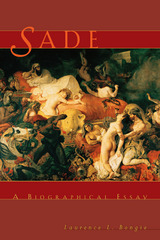
Sade
A Biographical Essay
Laurence L. Bongie
University of Chicago Press, 1998
The writings of the Marquis de Sade have recently attained notoriety in the canon of world literature. Now Sade himself is often celebrated as a heroic apostle of individual rights and a giant of philosophical thought. In this detailed investigative work, Laurence Bongie tests these claims and finds them unfounded and undeserved.
"A valuable correction to the perception of Sade as a profound thinker, a great writer, and a martyr to liberty. Drawing on original archival work, Bongie tries to illuminate Sade's childhood and his relationship with his parents. . . . Fluent and well-informed."—Library Journal
"Mr. Bongie . . . has written an investigation focusing on one aspect of Sade's character and development, his heretofore neglected relationship with his aristocratic mother. . . . A profitable selection."—Richard Bernstein, New York Times
"A welcome corrective. Bongie's book . . . aims to deflate the exalted claims made about the marquis by demonstrating that he was a monstrous character."—Scott Stossel, Boston Phoenix Literary Supplement
"A valuable correction to the perception of Sade as a profound thinker, a great writer, and a martyr to liberty. Drawing on original archival work, Bongie tries to illuminate Sade's childhood and his relationship with his parents. . . . Fluent and well-informed."—Library Journal
"Mr. Bongie . . . has written an investigation focusing on one aspect of Sade's character and development, his heretofore neglected relationship with his aristocratic mother. . . . A profitable selection."—Richard Bernstein, New York Times
"A welcome corrective. Bongie's book . . . aims to deflate the exalted claims made about the marquis by demonstrating that he was a monstrous character."—Scott Stossel, Boston Phoenix Literary Supplement
[more]
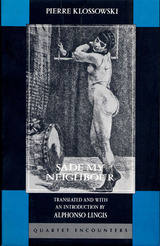
Sade My Neighbor
Pierre Klossowski
Northwestern University Press, 1991
Enlightenment ideals of a society rooted in liberationist reason and morality were trampled in the wake of the savagery of the Second World War. That era's union of cold technology and ancient hatreds gave rise to a dark, alternative reason—an ethic that was value-free and indifferent with regard to virtue and vice, freedom, and slavery. In a world where "the unthinkable" had become reality, it is small wonder that theorists would turn to the writings of a man whose eighteenth-century imagination preceded twentieth-century history in its unbridled exploration of viciousness, perversion, and monstrosity: the Marquis de Sade.
Klossowski was one of the first philosophers in postwar Europe to ask whether Sade's reason, although aberrant and perverted to evil passions, could be taken seriously. Klossowski's seminal work inspired virtually all subsequent study of Sadean thought, including that of de Beauvoir, Deleuze, Derrida, Bataille, Blanchot, Paulhan, and Lacan.
Klossowski was one of the first philosophers in postwar Europe to ask whether Sade's reason, although aberrant and perverted to evil passions, could be taken seriously. Klossowski's seminal work inspired virtually all subsequent study of Sadean thought, including that of de Beauvoir, Deleuze, Derrida, Bataille, Blanchot, Paulhan, and Lacan.
[more]
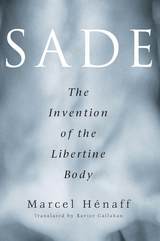
Sade
The Invention Of The Libertine Body
Marcel Henaff
University of Minnesota Press, 1999
A new model for examining Sade and his creations.
A new model for examining Sade and his creations.
Decried as a misogynist and pornographer, imprisoned for debauchery and for his writings, there is scarcely a cultural figure as flamboyant and controversial as the Marquis de Sade, the father of the new libertine body. But this is not, Hénaff maintains, the only way to see Sade. In this long-awaited English translation, Hénaff says that Sade should be discussed less for the sensual heat of his writing and more for the larger poetic and economic model his work represents.With unabashed candor, Sade describes bodies in terms not of flesh but of production, use, exchange, and waste. In his writing, this libertine self is unleashed from its constraints, no longer bound by old conceptions of desire and traditions of courtship. Hénaff’s argument that Sade is a sign of his times-exposing the courtly facade of a society unable to preserve itself-reveals dark, disquieting secrets about the direction of civilization. The libertine body, he says, is a child of this new order.ISBN 0-8166-2536-0 Cloth £34.50 $49.95xxISBN 0-8166-2537-9 Paper £14.00 $19.95x296 Pages 5 7/8 x 9 OctoberTranslation inquiries: University of Minnesota Press[more]
READERS
Browse our collection.
PUBLISHERS
See BiblioVault's publisher services.
STUDENT SERVICES
Files for college accessibility offices.
UChicago Accessibility Resources
home | accessibility | search | about | contact us
BiblioVault ® 2001 - 2025
The University of Chicago Press




